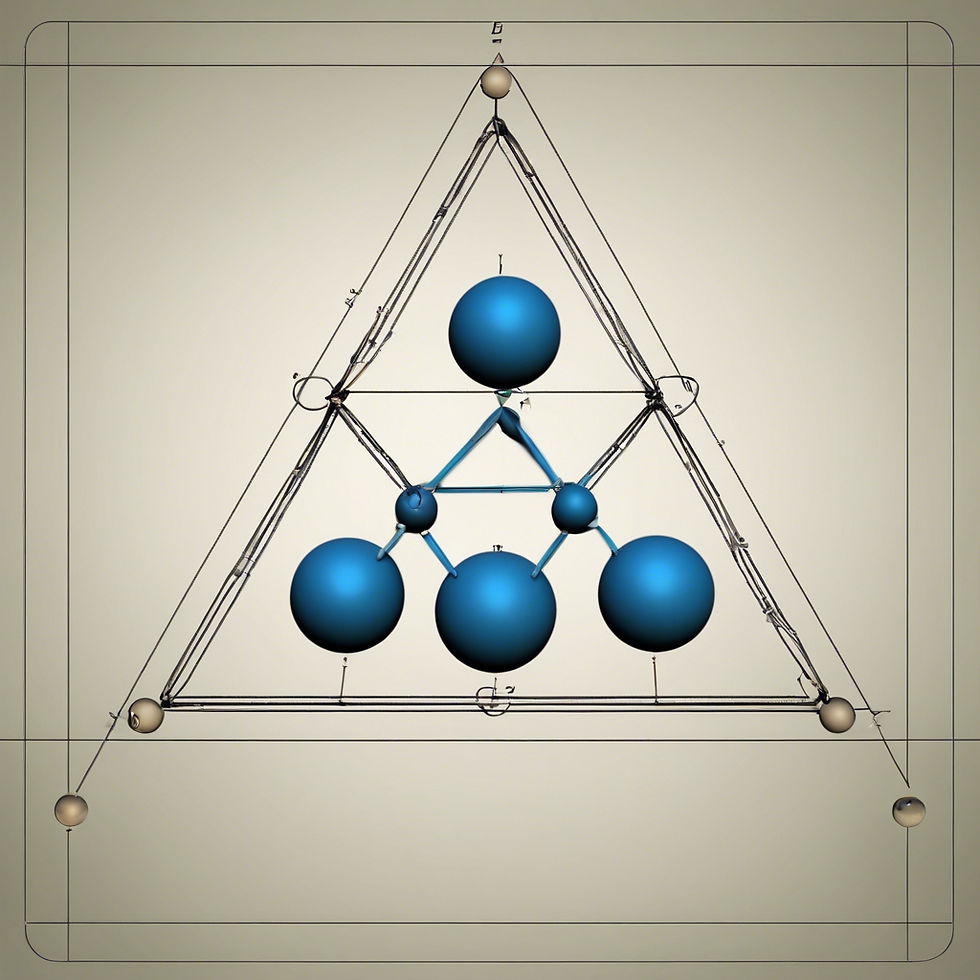Advanced Topics in Physics: an Introduction
- Stephen Sharma
- Dec 25, 2024
- 3 min read
Updated: Dec 30, 2024

When I started to think about physics, I was an undergraduate in college. My experience was profound and interconnected. It was the age of the new cloud computing paradigm, social networks, and decentralization of industry. In many ways, the former model of mass production and capital, which many economists proposed, was replaced with the newer philosophy of small firms and pivoting workshop models. However interesting the times were, I was mesmerized by the problems in physics and the patterns that seemed to emerge from the physical phenomena. What drove me was a passion for grand unification. This pursuit stayed with me in graduate school and even medical school, where I was interested in the mechanisms of the mind. It was a complex time. The profound nature of science, a means to find truth, seemed to get to the heart of my ethos, my beliefs. I was passionate about nuclear fusion, blockchain, mathematical functions, and new ways of thinking. I diligently worked on a tome regarding the new physics that I saw, the result of discussing neutrinos, Green's functions, and quantum entanglement. However, my career was highlighted by one overarching theme, the tunneling microscope.\\Scanning tunneling microscopy is a tool to study conducting surfaces, atoms, and molecules at the nanometer scale. Taking advantage of the quantum mechanical effect of tunneling electrons traveling into a classically forbidden zone, the microscope is sensitive to the atomic energy levels found in quantum mechanics. I had found the key. Tunneling was superluminal. Tunneling was entanglement. Tunneling was the complex adaptive scientific enterprise. Tunneling was emergent. Tunneling was fundamental. Tunneling held the key to new paradigms of conscious quantum brains. I was enthralled. Everything I saw turned into quantum tunneling. I scanned late into the night, spending my time with some of the great minds of condensed matter physics. I was communicating with the community of scientists. However, I was not interested in diluting the field with another paper, another poster, or another junk article. I was interested in asking the big questions. These were the questions about unification, the standard model, quantum mechanics, general relativity, thermodynamics, and mathematics. Of course, tunneling was key; it was my paradigm. I knew that I could find the answers to difficult questions by probing the instantaneous motion of electrons in the forbidden zone. It guided me to my philosophy of physics.\\Many of the relations of nature are patterns. The inverse square law of gravitation and the inverse square law of electrostatics have the same form. This is not a coincidence. Mathematics is the language of physics and as such it is decorous to start the discussion with classical mechanics. Of course, there were thoughts before the Enlightenment but these pale in comparison to the ideas of the ones of analytic mechanics. Egyptian, Greek, and Mesopotamian cultures all had abstractions of physical laws but it was the Enlightenment that created the calculus that we need today. Let's just get right to it. The fundamental theorem of calculus needs to be changed. If we make the theorem one of a hybrid mathematical-physical abstract space, such as that proposed by Roger Penrose, we find insight into solving problems of the complexity we see in the world. Penrose proposes some interesting ideas in the Platonic mathematical world, physical world, and mental world. These are all connected in a triangle that represents their interconnected nature. The mental world creates the mathematical world. The mathematical world describes the physical world. The physical world creates the mental world. Of course there are emergent properties in each of these worlds and scale invariant patterns that remain. The universe is like this infinite fractal that expands in dimension and time; it is a crystal that is deterministic in its most fundamental abstraction. The fundamental theorem of calculus proposes a form to the traditional one to one mapping function exchange of dimension. Integrals and derivatives have a constant of integration that is used for the indefinite form. What this means is basically that the area under a curve must be bound. However, if we expand our idea of the fundamental theorem of calculus to include a time-stamp like form, where the Riemann zeta function is attached to the form of the indefinite integral, we have a hybrid physical and mathematical description of systems in the universe that more resembles their complex adaptive system like behavior and their fitting into the Penrose paradigm.
Commentaires